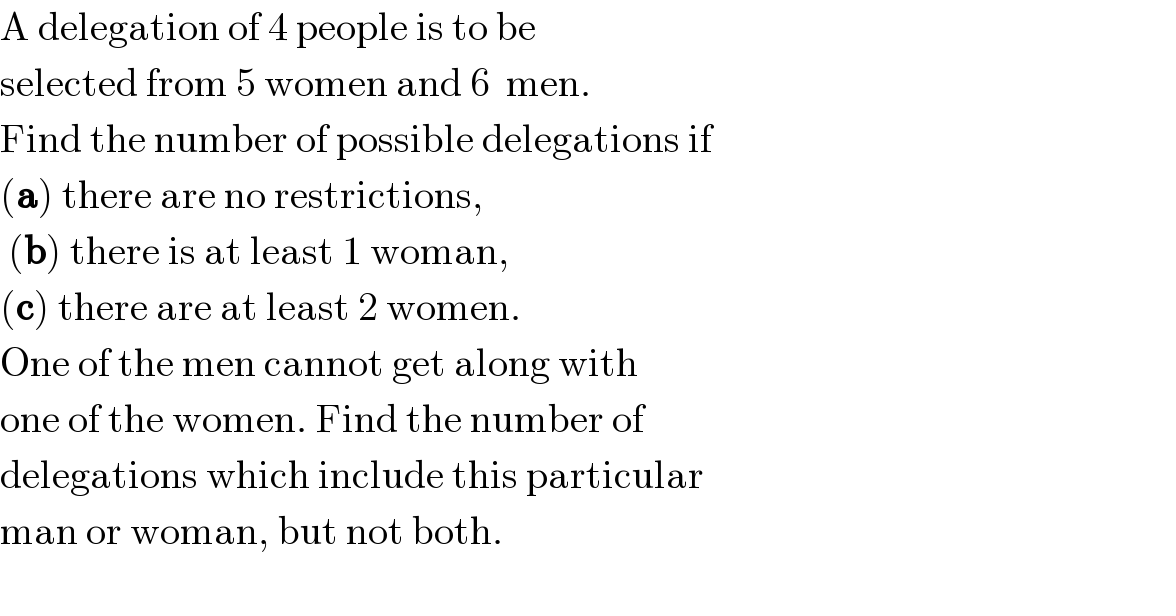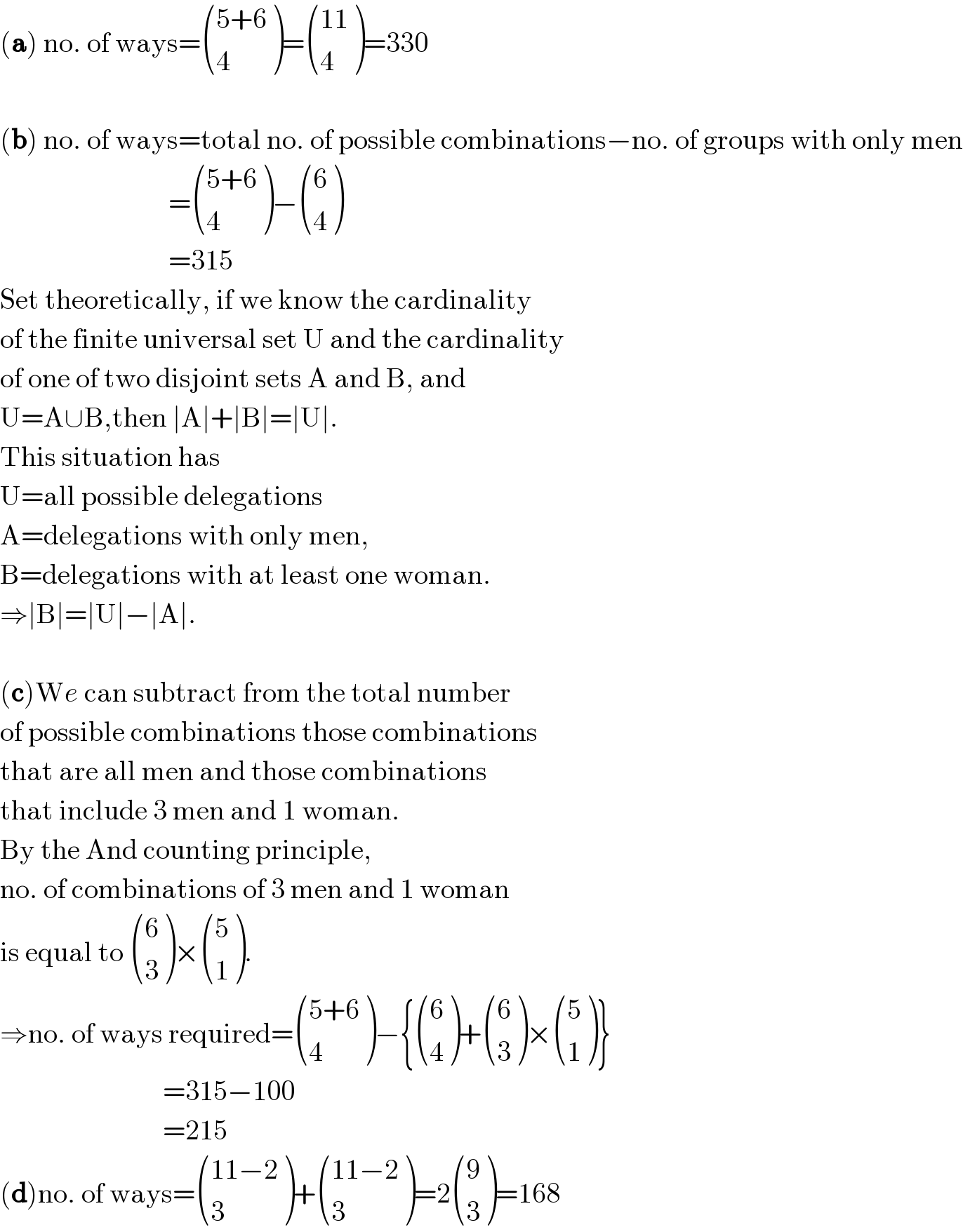
Question and Answers Forum
Previous in Permutation and Combination Next in Permutation and Combination
Question Number 5280 by Rasheed Soomro last updated on 04/May/16

Answered by Yozzii last updated on 04/May/16

| ||
Question and Answers Forum | ||
Previous in Permutation and Combination Next in Permutation and Combination | ||
Question Number 5280 by Rasheed Soomro last updated on 04/May/16 | ||
 | ||
Answered by Yozzii last updated on 04/May/16 | ||
 | ||
| ||